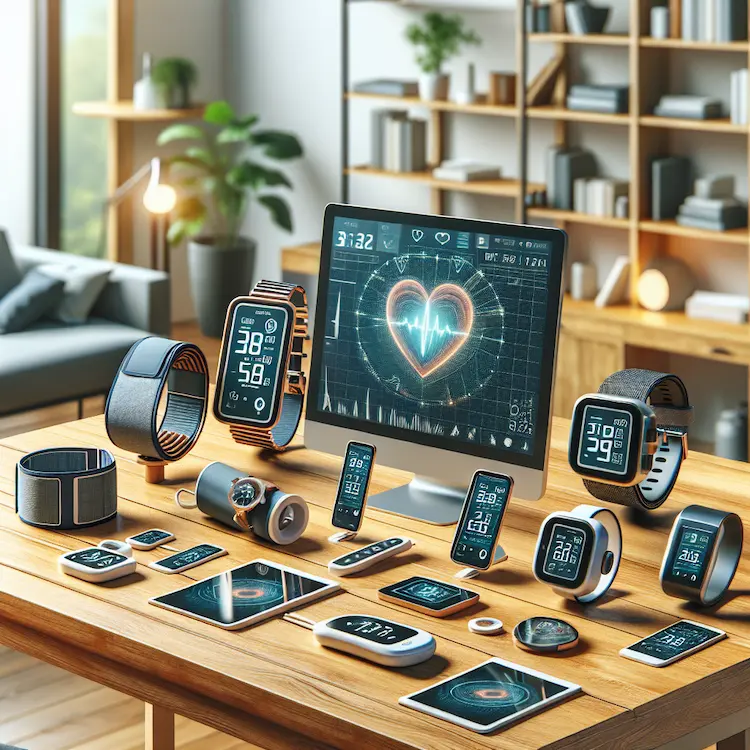Home Blood Pressure Monitoring (HBPM) is the practice of measuring your blood pressure regularly in the comfort of your home, outside of clinical settings. This technique has gained popularity due to its ability to provide a more accurate picture of a person’s blood pressure trends.
Why is HBPM Essential?
HBPM is more than just a convenience; it is a critical tool for improving heart health. Here’s why:
- Better Hypertension Management: Hypertension is known as the “silent killer” because it often shows no symptoms until severe complications arise. Monitoring at home helps individuals manage their blood pressure effectively, reducing the risk of complications like stroke, heart attack, and kidney disease.
- Early Diagnosis: HBPM allows for the early detection of hypertension, particularly when combined with regular clinical checkups.
- White Coat Syndrome Reduction: Many people experience heightened anxiety during doctor visits, leading to inflated readings. HBPM eliminates this variable by recording blood pressure in a relaxed environment.
- Empowering Patients: Continuous monitoring encourages individuals to take an active role in their health. Understanding how lifestyle choices affect blood pressure can motivate behavior changes.
HBPM Statistics and Facts
- According to the World Health Organization (WHO), hypertension affects approximately 1.28 billion adults aged 30–79 worldwide, with many remaining undiagnosed.
- Studies reveal that patients who use HBPM devices are 30-50% more likely to adhere to prescribed treatments and experience better outcomes compared to those who rely solely on clinic visits.
- HBPM can reduce cardiovascular disease-related deaths by 10-15%, especially in high-risk populations.
Devices and Methods for HBPM
There are several methods for home blood pressure monitoring. Here’s a breakdown of the most common types of devices:
| Type | Key Features | Best Suited For |
|---|---|---|
| Digital Monitors | Automatic, easy-to-use, memory storage | General users |
| Manual Monitors | Requires stethoscope and expertise | Healthcare professionals |
| Wrist Monitors | Portable, compact, less accurate | People who travel frequently |
| Smart Monitors | Connectivity to apps, real-time tracking | Tech-savvy users or fitness enthusiasts |
Detailed Comparison
-
Digital Monitors:
- The most widely used devices for HBPM due to their user-friendly design.
- Features like one-touch operation and memory storage make them suitable for most users.
- Example brands: Omron, Beurer.
-
Manual Monitors:
- Known for accuracy but challenging to use without training.
- Often used by healthcare professionals for spot checks.
-
Wrist Monitors:
- Convenient and portable but prone to positional errors.
- Require the user to keep their wrist at heart level for accurate readings.
-
Smart Monitors:
- Sync with smartphones or health apps, enabling long-term tracking and trend analysis.
- Ideal for users who want to integrate HBPM into broader health tracking routines.

Steps for Effective Home Monitoring
Follow these steps to ensure accurate and consistent results:
-
Prepare Properly:
- Rest for 5 minutes before taking a reading.
- Avoid caffeine, alcohol, or exercise for at least 30 minutes prior.
- Sit upright in a chair with your feet flat on the ground.
-
Positioning Matters:
- Use the correct cuff size for your arm.
- Place your arm on a table so that the cuff is at heart level.
-
Consistency:
- Take readings at the same time every day, preferably morning and evening.
- Record at least two readings during each session and calculate the average.
-
Log and Share Data:
- Keep a written or digital log of your readings.
- Share the data with your healthcare provider to facilitate better diagnosis and treatment planning.
HBPM vs. Other Blood Pressure Monitoring Methods
| Aspect | HBPM | Ambulatory BP Monitoring (ABPM) | Office BP Measurement |
|---|---|---|---|
| Convenience | High | Moderate | Low |
| Frequency | Regular (Daily) | 24-hour monitoring | Sporadic |
| Cost | Affordable | Expensive | Low |
| Accuracy | High (if done correctly) | Very High | Variable |
- Ambulatory BP Monitoring (ABPM): A wearable device tracks blood pressure over 24 hours, providing comprehensive data. While accurate, ABPM is expensive and not practical for long-term use.
- Office BP Measurement: Commonly used but limited to single-time readings, making it insufficient for tracking daily variations.
Practical Tips for Success with HBPM
- Pick the Right Device: Ensure your device is validated by reputable organizations like the American Heart Association (AHA).
- Establish a Routine: Create a daily habit of taking readings at the same time.
- Optimize Your Lifestyle:
- Maintain a balanced diet with low sodium intake.
- Engage in regular exercise like walking or yoga.
- Manage stress with relaxation techniques.

Impact of HBPM on Public Health
HBPM has had a transformative effect on public health:
- Reduced Hospital Visits: Patients equipped with home monitors make fewer emergency trips for hypertension management.
- Improved Treatment Outcomes: Early intervention and regular tracking prevent severe complications, reducing the burden on healthcare systems.
- Community Awareness: HBPM promotes health literacy, encouraging more individuals to seek diagnosis and treatment.
Conclusion
Home Blood Pressure Monitoring is an invaluable tool for managing hypertension and improving overall health. By choosing the right device, adhering to proper techniques, and integrating HBPM into your daily routine, you can take control of your cardiovascular health. Remember, consistency and collaboration with your healthcare provider are key to success.
Key Takeaways:
- Choose an HBPM device that suits your lifestyle and abilities.
- Follow best practices for measurement to ensure accurate readings.
- Use your data to guide lifestyle changes and inform your doctor’s recommendations.


